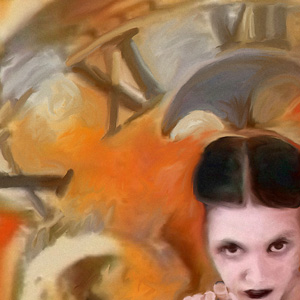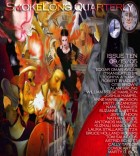All that ash. How important are image patterns to your own writing—and the flash form?
They do crop up. I suppose that when I run out of juice the image becomes something to exploit. Flashes usually come in flashes. I count on it.
Her flicked cigarette ash to the floor really gets me. Such a great moment. In your fiction, how do you decide what to tell and what to show?
It’s predecided. I don’t think about it. Or if I have thought about it I’ve forgotten about it by now. I believe in both telling and showing. Telling is underrated.
What does the flash form offer that other forms of expression don’t?
Brevity.
A teacher of the Alexander Technique? Tell me more (please).
What are your habits around movement and thinking? Have you been taught how to move? How to think? What are your habits around seeing and hearing? Is there a connection between your brain and your heart? My work is about neural plasticity. Functional and microstructural changes of the brain evolve with training and stimulation. By bringing the power of your attention to daily habits you can avoid injury, tension and boredom, as well as realize your talent and its potential.
Here’s your first lesson: We see not with our eyes, but through them. We see with our brains, preferably from the upper visual cortex. If your neck is tight it will pull your head back and place your visual origins in the lower visual cortex. This may flatten out your perception, as well as the shape of your eye, causing problems; problems you may not be aware of, or take for granted, which is to say that seeing with tension becomes the new norm. So make your seeing conscious and untold benefits will follow.
If your skull is not properly balanced on your spine, possibly as a reaction to how you see, your whole body suffers. There’s usually a pull down effect in response to gravity. So then locking in muscular tension to stabilize the joints to keep from falling also becomes the norm. We, thus, override our righting reflexes and so come to depend on the chronic effort of the muscles to keep us upright. Even if we’re lying down to rest or sleep we can’t release the now stored tension in our bodies. What will happen over time if we allow this to continue?
In a lesson we will attempt to reverse the deep rooted habits of being, of seeing, of moving and thinking. If how you see, hear, think, and move are not attended to then it’s likely that your day to day activities are dictated by unconscious mechanisms and so your movements and even your thoughts become habitual, choiceless. This choicelessness tends to wear out the body and brain before its time. It locks your responses to new stimuli into preset patterns that make it difficult to learn something new. It affects our lives in ways we may never become aware of, unless addressed with someone trained to do so.
In order to learn something new we need to pause before a stimulus, and notice our response to it. This would be your habit. Replace the habitual way of reacting with a new direction; e.g., release my neck and lengthen my spine. Then move, maintaining this new level of awareness. Try it now. Stand in front of a chair, and see if you notice its pull on you. This pull needs to be neutralized as it’s likely causing you to compromise your use of your self, i.e., causing some tension, which distorts messages entering and exiting your brain, which may limit your ability to express yourself, musically and otherwise, and it, the habit, may eventually cause a breakdown or injury.
The goal of regular lessons is energetic unity, consciousness expansion, clearing away tensions and their habitual reinforcers so that you can rest in your heart, while seeing from the back of your brain, thus integrating your thinking, moving and feeling; or your whole brain with your heart. The process is as described above. Self-observation and directional thinking. Or attention and will.
A little bird from an island off the coast of New York told me you were writing a novel. How’s that going?
Thanks, it’s going well at the moment. But let’s wait ten minutes.



 The core workshop of SmokeLong Fitness is all in writing, so you can take part from anywhere at anytime. We are excited about creating a supportive, consistent and structured environment for flash writers to work on their craft in a community. We are thrilled and proud to say that our workshop participants have won, placed, or been listed in every major flash competition. Community works.
The core workshop of SmokeLong Fitness is all in writing, so you can take part from anywhere at anytime. We are excited about creating a supportive, consistent and structured environment for flash writers to work on their craft in a community. We are thrilled and proud to say that our workshop participants have won, placed, or been listed in every major flash competition. Community works.